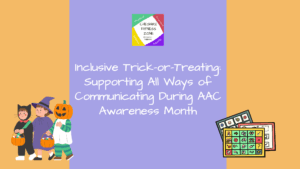Gross motor skills are actions that involve using your muscles, in particular, larger movements such as those of your legs, arms, or your entire body. So even though you may think these skills have nothing to do with academics, an increase or decrease in your child’s gross motor skills can show changes in their testing results and classroom achievement.
How to Recognize the Signs of Delayed Gross Motor Skill Development
There are many ways to recognize the signs that your child is having problems with gross motor skill development, but this generally depends on the age of the child. For instance, an infant may show signs early on by not performing certain developmental milestones like rolling over, sitting independently, crawling, standing, or walking. You may also notice that your infant appears to have stiff or floppy muscles, and difficulty holding up his or her head. Toddlers may display signs by having difficulty walking, running, jumping, climbing stairs, or hopping. While getting the hang of these activities takes time for any child, your child may appear to be extra clumsy when they actually have low muscle tone. Besides displaying many of the symptoms that toddlers display, older children can show difficulty riding a bike, throwing and catching a ball, inability to repeat movements they just completed, or trouble with balance.
How Does This Affect Academics?
Physical activity actually helps nerve cells in our brain to multiply, and, as you could guess, the more nerve cells we have, the smarter we are. Studies have shown that children who are physically fit when they are young stay smarter for longer when they become adults. Having the ability to actively participate in activity that requires the use of our gross motor skills actually affects our brain function as well. If you notice symptoms of delayed gross motor skill development, you may also notice delays in areas such as attention, memory, and concentration. Additionally, improving gross motor skill use through therapy can help with completing on-task behaviors and higher academic performance.
Activities to Support Therapy
Many parents wonder what they can do at home to help support the therapy process for their child. Since most children see their therapist only once or twice a week, participating in activities with your children that are fun and help them improve their motor skills can be very beneficial. Try some of these activities when spending time with your child.
- Pretend Play– Encourage your child to fly like airplanes, hop like a rabbit, or waddle like a duck. They will be improving their motor skills without even knowing it!
- Hopscotch-Encouraging hopscotch helps with balance and muscle strength.
- Bust out the bubbles– Bubbles are fun for everyone! But chasing and popping them helps with gross motor skills.
- Rolling, rolling, rolling– Rolling down a hill can bring awareness to the upper and lower body for a child who faces difficulty with gross motor skills. For parents, this can also bring back great childhood memories.
- Hit the playground. Swinging on the swings helps your child maintain balance and gain strength in their legs by pumping back and forth. Climbing and using the slide also helps.
- Dance party! – Dancing around helps your child improve their gross motor skills and adding songs like “Hokey Pokey” or the “Chicken Dance” help with coordination as well.
- It’s all a balancing Act-Balancing can be a scary for children when they are using equipment that is off the ground. Create fun and simple balancing practice by laying a long piece of yarn in the yard.
- Obstacle Course-Set up an at home obstacle course to help your child perform tasks such as climbing, jumping, and crawling. Use regular household items like pillows, blankets, and furniture.
It can be a scary thing to think that one issue your child faces with their gross motor skills can carry over into other areas of their life. Putting fear aside, there are many ways you can help your child improve their academics while they work with their therapist to improve their gross motor skills. Consult with your child’s school teachers and therapists to find out how you can help provide support at home to reduce the effect of gross motor skill delay on academics.



